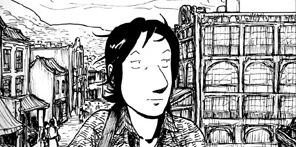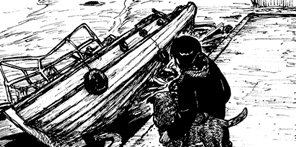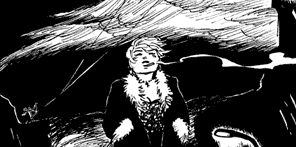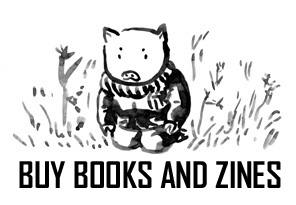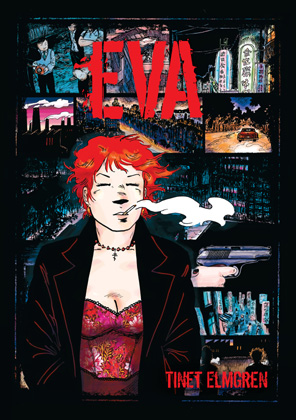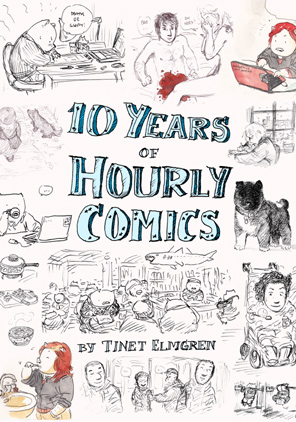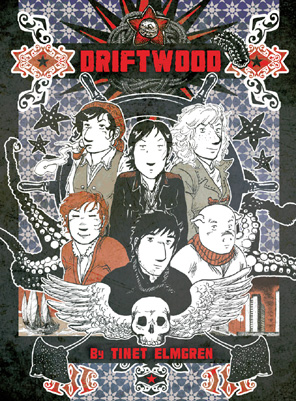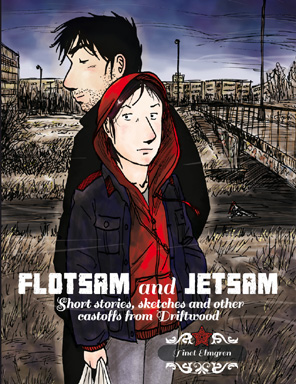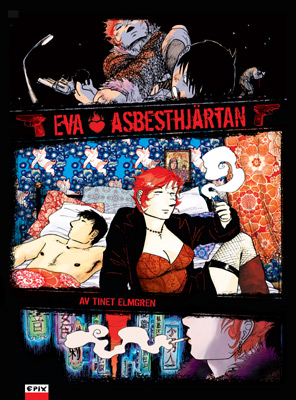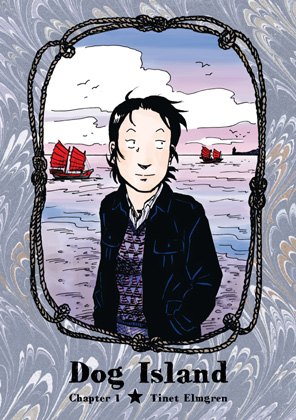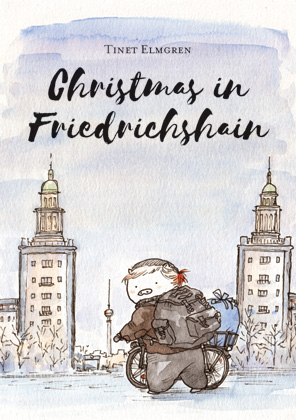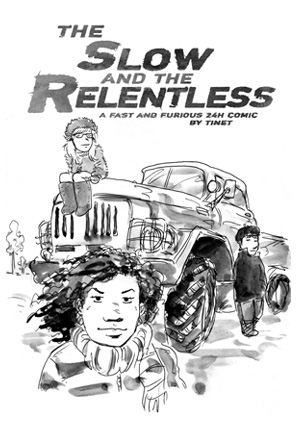Inktober 2021
My inktober this year was definitely less quantity, but perhaps more quality?
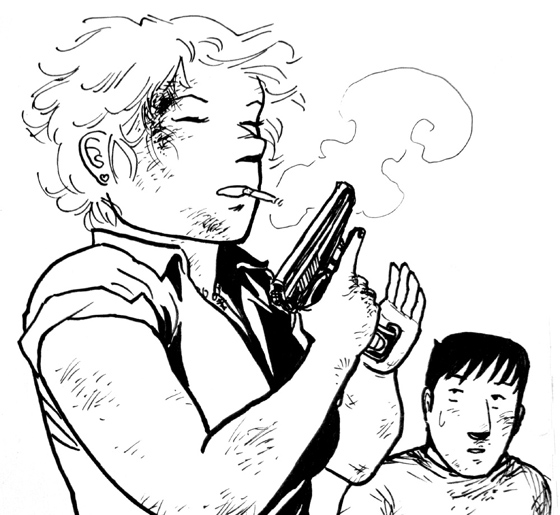
As usual I switched between several prompt lists. Starting off with #goretober2021 day 1: Bruises (Eva and Ting Yay edition ♥)
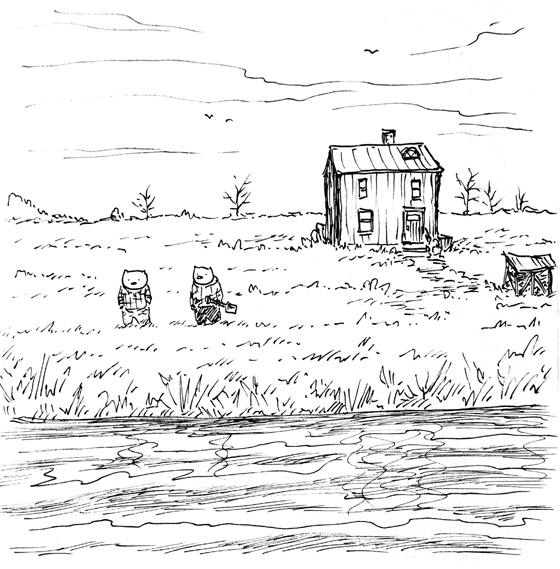
#inktoberrussia2021 2. день: По ту сторону реки (On the other side of the river)
This is a remake of a sketch I made in 2016 when my life was pretty shit and I was frustrated that my art reflected that (not surprisingly). Today I kind of wish I would have just gone for it and created lots more of depressing, desolate and brilliant art.
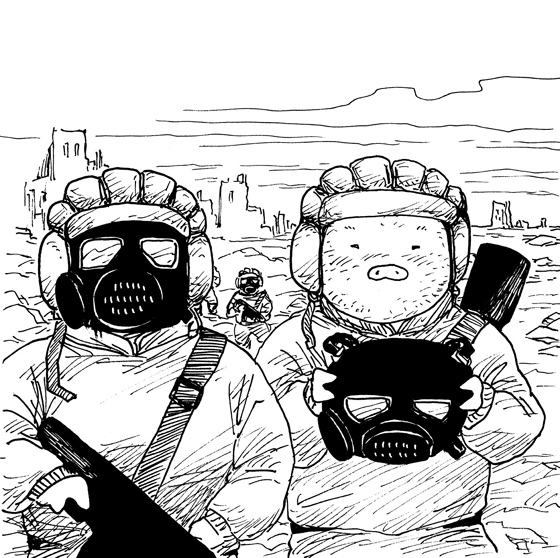
#wartober2021 day 3: “Mask on” (Andrei from my piggy book Sweet Peas)
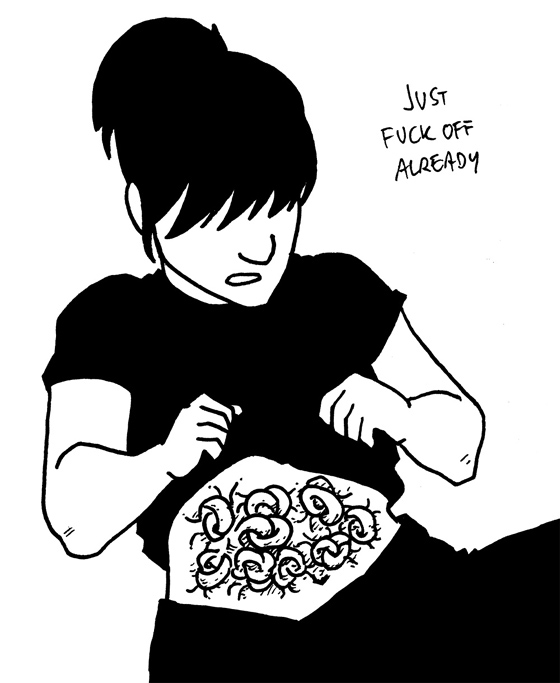
#inktober2021 day 4: Knot (stomach in knots)
My stomach was indeed in knots on that day about a couple of things (as far as I remember: some bureaucracy shit and a writing project), but eventually I succeeded in everything and all was okay. ^^
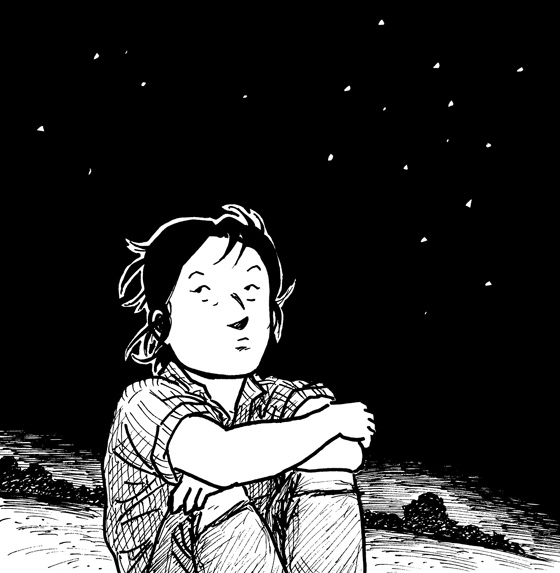
#retrotober2021 day 5: Stars (Wilie from Driftwood/Dog Island gazing at the unfamiliar constellations)
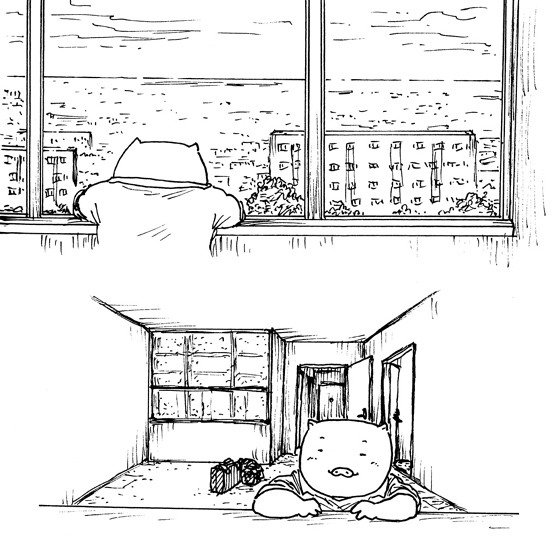
#inkhoteeditions 2021 day 6: Chez moi (at home), in a parallel universe where I moved into a two room flat on the 13th floor. I could have done just that, but it wouldn’t have been ideal for my doggie. Instead I got another very nice flat that is very much ideal for my doggie. ♥
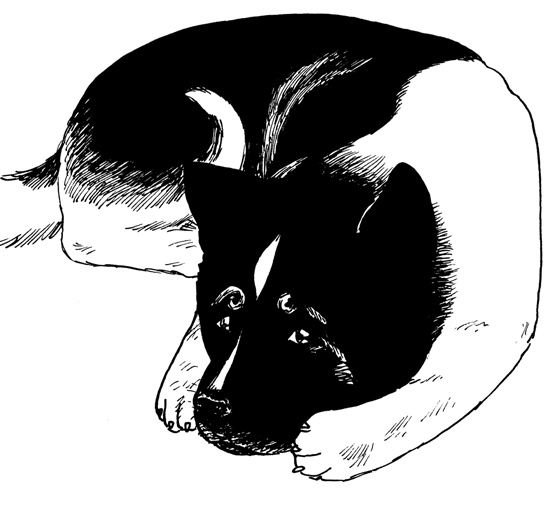
Then a skip ahead to the 10th, which was my princess Mitsu’s 27th birthday. She was such a tiny baby and I always tend to chibify my drawings of her if I don’t watch out.
Several prompts were suitable for celebrating Mitsu’s memory:
#majasbokdraw2021 day 10: My dream pet
#blacktober_zetta day 10: Mythical Beast
#inkhoteeditions day 10: Anniversaire
… maybe also #gristober2021 day 10: Resurrect? …
It’s a fun challenge to associate freely with the prompts. I can keep up with it best if I can maintain a fixed inktober routine, but anything upsetting the routine and pulling me out of the mindset (like a comics festival early on right in the middle of it, as happened this year) can be disastrous. ^^;
SWEET PEAS WATERCOLOURS
Some watercolours of the piggies in my book Sweet Peas that I painted for the Gothenburg Book Fair last year, with some backstories about them.
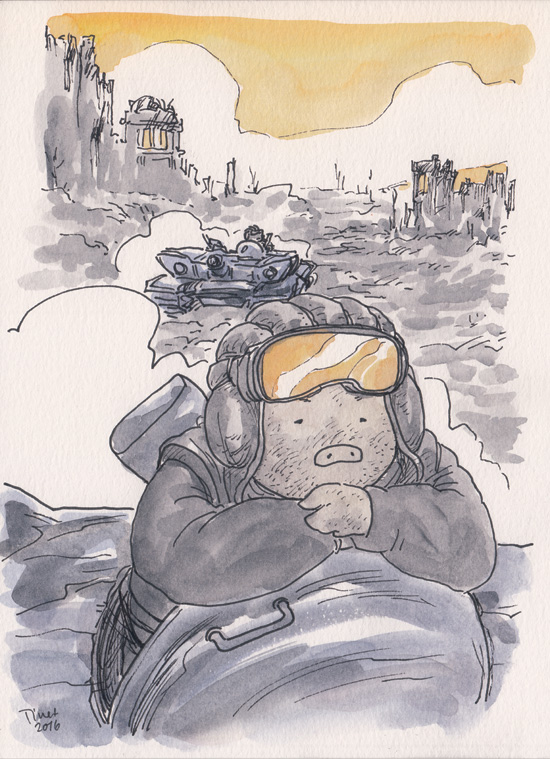
Andrei was the gunner in a T-194 tank crew in what became known as The Final War among some of the few piggies who survived. He now thinks he joined the army for quite foolish reasons – partly in the belief that he could make a difference from the inside, partly for the money and benefits offered, and partly due to pressure to ‘prove himself’ as a half-Congolese Russian piggy. Then again, his intimate knowledge of war machinery brought him together with Chulpán when he deserted and joined the Resistance.
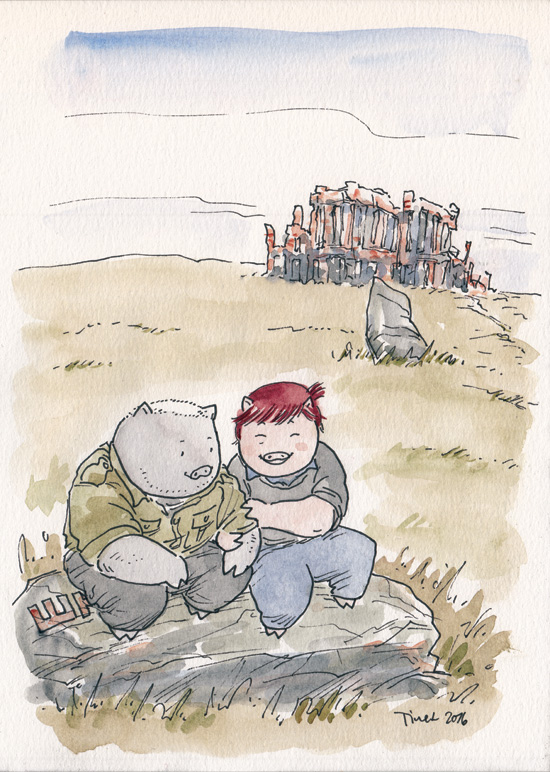
On the hill above Chulpán’s place are the ruins of a manor house that was ransacked and abandoned already in the revolution. The building where she’s set herself up was originally the gatekeeper’s lodge. The ruins of Tsarist Russia were since joined by rusting mecha from the war.
How I do watercolours
I used to paint a lot with watercolours as a child and teenager, but then I started to draw comics seriously, and at least in the 90’s and 00’s I had no affordable way of printing full colour comics, so I worked exclusively in black and white for ages.
Only two years ago or so I started making forays into watercolour comics, with grey wash (The Slow and the Relentless), lots of little piggy sketches in colour, and my first colour comic (China White). Around that time, the Swedish comics publisher Ordbilder Media made a call for comic book pitches, including the option of an 80 page comic book in full colour. I pitched a watercolour piggy comic. The rest is history …
Here are my tools:

Cheap Hahnemühle watercolour board with a nice grain, Pelikan watercolours from 25 years ago, also 25 year old Raphael “Kazan squirrel hair” brush, size 1 or 2 (I’ve used it for watercolours and ink alike), tiny size “00” brush for the smallest details and cleaning up splotches. Staedtler pigment liners (sizes 0.2, 0.3, 0.5), mechanical pencil HB 0.7, lots of coffee … and finally, a Staedtler mars plastic eraser doing the devil’s work.
Half of the watercolour case and the browns and greens are from a Pelikan watercolour set (like this one) that my friend Nicole and I split in 6th grade, when our class cleaned out the crafts closet in our classroom. I supplemented it back then with blues, reds and yellows.
My process with this comic was as follows: I sketched with pencil on the board. Then I inked it with Staedtler pigment liners (they become waterproof after they’ve dried).
Then I committed the horrific act of erasing the pencil from underneath the ink. It does kind of ruin the surface to use eraser. But not enough for me to care, I guess.
Finally, I coloured with the watercolours.
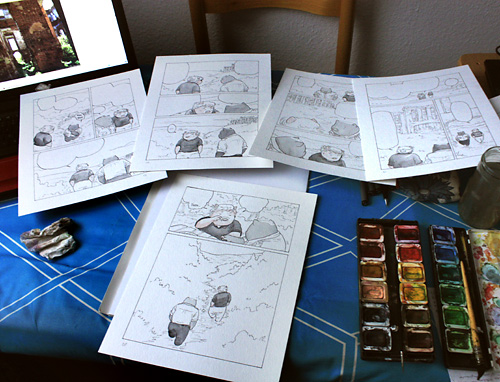
I often did certain parts of the colouring in batches of 4-6 pages, to save time and to make the colour consistent in the parts that should be consistently of the same colour in one scene, like their skins and hair and some of their clothes. This should not be overdone, though, since each page is an entity that must harmonize within itself.
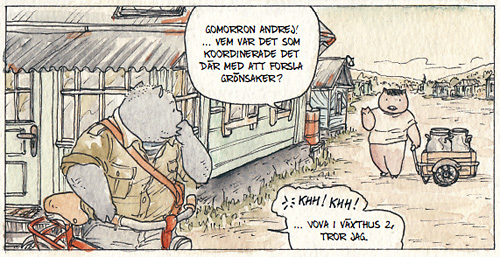
For the yellow morning light I started with a light yellow wash on the whole panel.
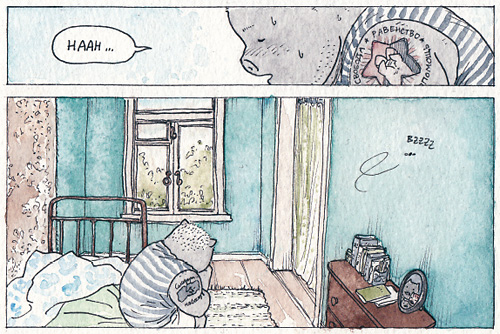
Before you’ve acquired truly mad skills, it’s usually best to use a somewhat limited colour palette for each scene, with two base colours and one or two accent colours. Above: brown/teal//light green/greyish blue.
Below (in the flashback): pink/grey//gold
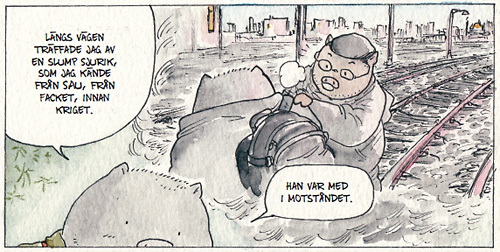
Green is a pain in the arse and difficult to make look bearable. This comic is set in the summer, in the countryside, so it has a lot of greens … For greens in nature I used blue-greens and yellow-brown-greens.
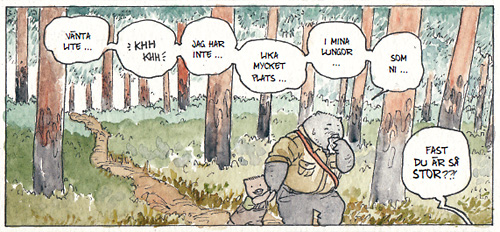
For the man-made swine-made structures, by contrast, I used more “straight-up” greens, to accentuate their artificiality.
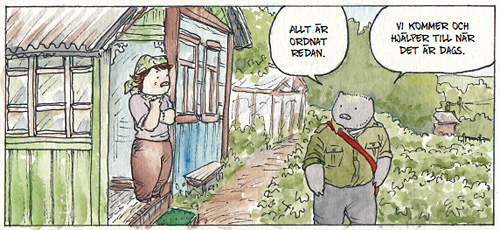
(Light green, turquoise and brown are popular colours for village houses in Tatarstan and Bashkortostan!)
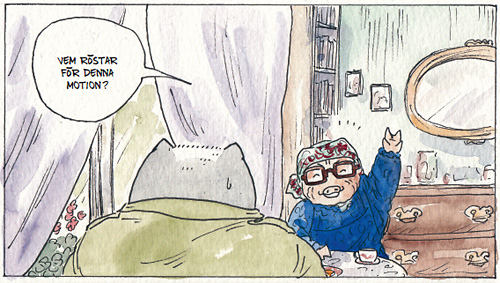
My favourite advice on watercolours from Hayao Miyazaki: Use transparent, not sticky, paint; paint another layer after the first has dried.
My favourite advice from Joann Sfar (in one of the Klezmer afterwords): Use “unnatural” colours.
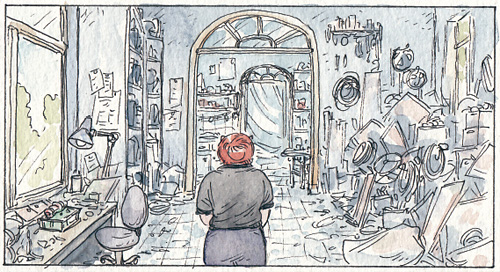
My own advice to myself: Don’t overwork the colouring with too much detail, and let the paper (or base wash) show here and there. With watercolours the most beautiful thing is the natural surface of simple strokes and washes. And keep some tissue/toilet paper handy. You will need it.
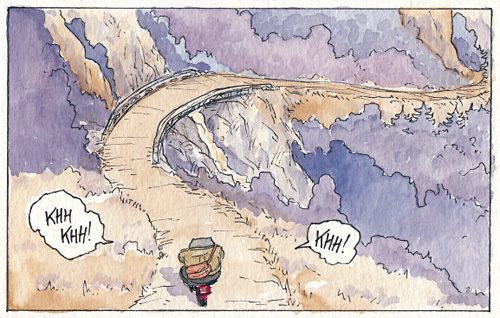
Finally, here is a video of me colouring one page in this book. It’s sped-up (obviously) – in reality it took me 35 minutes.
Akvarellfärgläggning: Tinet Elmgren / “Sockerärter” from Tinet Elmgren on Vimeo.
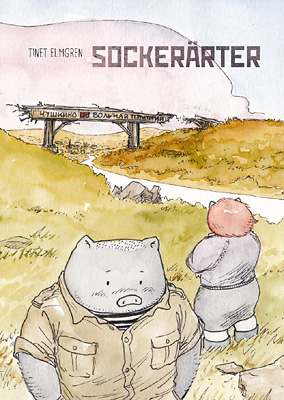
Sockerärter (“Sweet Peas”) will be released by Ordbilder Media at Stockholm International Comics festival, May 7th-8th 2016! I will be there to sign it and talk about it.
